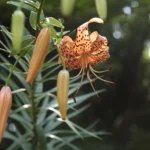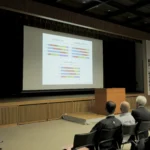
The Foundress

The Co-Founder

The Second Spiritual Leader
Oomoto is a small religion as measured by the number of its followers, but since its founding in 1892 it has played a role far in excess of its size in influencing inter-religious dialogue in Japan and abroad.
The reasons are to be found in Oomoto’s history. For Oomoto, inter-religious work is a central part of its divine mission. Joint worship and exchanges with other religions have not been merely a side business, something which a religion needs to do to keep up harmonious relations with others. According to the teachings of its founders, inter-religious work is what God created Oomoto to do.
The Founding of Oomoto
Oomoto’s history begins on the night of the Lunar New Year in 1892, when the Foundress Nao Deguchi had the first of a series of divine revelations which form the basis of Oomoto. Nao, a 56-year old woman from the poverty-stricken farmland of Ayabe, northwest of Kyoto, at first could not fully understand her own automatic writings, which are known as the Ofudesaki “From the Tip of the Brush”. However, in 1899, the young mystic Onisaburo joined her small band of believers. Onisaburo, possessed of strong spiritual powers, artistic creativity, and immense energy, was to become one of the most charismatic figures in Japanese religious and intellectual thought of the 20th century. In 1900, he married Nao’s daughter Sumiko and over the next decades the basic outlines of Oomoto’s teachings took shape under his guidance.
Ayabe and Kameoka
The Two Headquarters
In time Oomoto came to have two head-quarters: One at Ayabe (77 kilometers northwest of Kyoto), home of the Foundress, and one at Kameoka (23 kilometers west of
Kyoto), birthplace of Onisaburo. The Ayabe Headquarters, clustered around sacred Mt. Tsuruyama, is Oomoto’s “Spiritual Center”. The Kameoka Headquarters, built on the grounds of old Kameyama Castle, is Oomoto’s “Center of Activities”.
The Spiritual Leader
According to the Foundress’ prophecies, the Spiritual Leader of Oomoto must always be a woman. Thus, after Nao’s death, Sumiko became the Second Leader, later to be succeeded by her daughter Naohi, and her grand-daughter Kiyoko.



